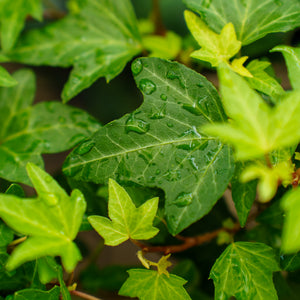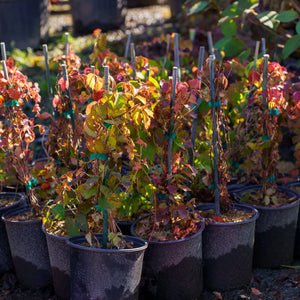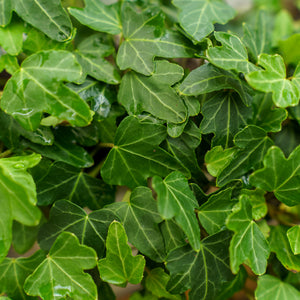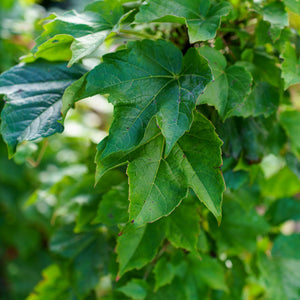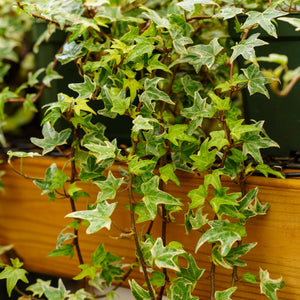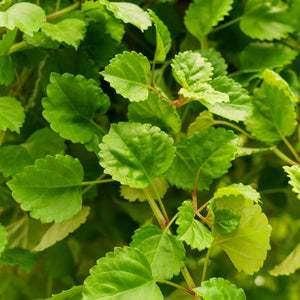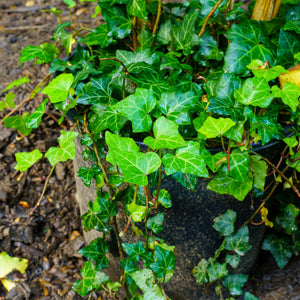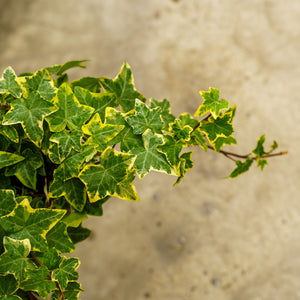The Ivy Guide
Ivy, with its lush foliage and versatile growth habit, brings a touch of classic elegance to any garden or indoor space. Known for their trailing vines and climbing abilities, ivy plants are perfect for adding greenery to walls, trellises, containers, and ground covers. These plants thrive in a variety of conditions and require minimal maintenance, making them an excellent choice for enhancing indoor plant collections, creating lush garden displays, or adding unique elements to landscapes. Explore our Ivy Guide to discover how to cultivate and care for these fascinating plants and incorporate them into your spaces for lasting beauty and enjoyment.
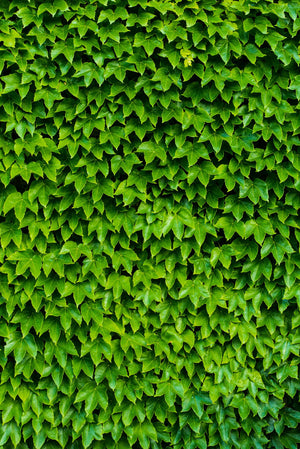
About
Ivy refers to climbing and trailing plants within the Hedera genus of the Araliaceae family. With approximately 15 species, including the widely popular Hedera helix (English Ivy), ivy plants are renowned for their adaptability and aesthetic appeal. Native to Europe, western Asia, and North Africa, these plants have gained global popularity for both ornamental and functional uses.
Ivy features evergreen foliage that varies from deep green to striking variegated patterns of green, white, yellow, and even purple. Their lobed leaves and ability to cling to surfaces make them ideal for covering walls, fences, and trellises, adding a natural elegance to outdoor spaces. Beyond aesthetics, ivy contributes to ecosystems by providing habitat and food for wildlife, including birds and insects. Its dense foliage offers shelter and nesting sites, while mature plants produce berries that serve as a food source for birds.
Indoors, ivy is celebrated for its air-purifying qualities, effectively removing pollutants like formaldehyde, benzene, and trichloroethylene, contributing to a healthier indoor environment. Their versatility and ease of care make ivy suitable for a range of applications, including ground covers, container plants, living walls, and topiaries.
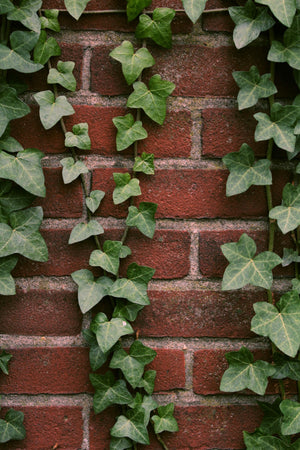
Planting
To ensure successful growth, follow these essential guidelines:
- Soil: Use well-draining soil enriched with organic matter. A mix of garden soil, compost, and perlite or sand provides the right balance for moisture retention and drainage.
- Light: Ivy thrives in bright, indirect light but can tolerate partial shade. Avoid direct sunlight, which may scorch leaves, especially indoors.
- Watering: Keep the soil evenly moist, allowing the top inch to dry out between waterings. Reduce watering during winter when growth slows.
- Humidity: Moderate humidity levels are preferred. Increase humidity indoors by misting the leaves, using a pebble tray, or placing a humidifier nearby.
- Temperature: Maintain moderate temperatures between 50-70°F (10-21°C). Protect ivy from extreme cold, heat, and drafts.
- Containers: Use pots with drainage holes to prevent waterlogging. Hanging baskets and pots with trellises work well for trailing ivy.
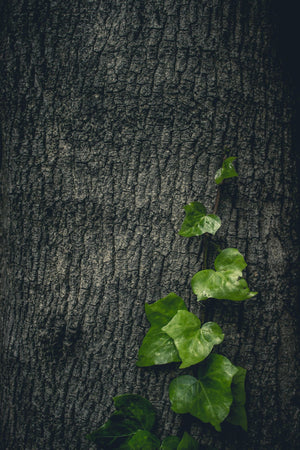
Care
Ensure optimal health with these care tips:
- Watering: Consistently moist but not waterlogged soil is key. Adjust watering frequency based on seasonal changes.
- Fertilizing: Feed ivy during the growing season with a balanced, water-soluble fertilizer diluted to half strength every 4-6 weeks.
- Pruning: Regularly trim back overgrown or leggy stems to maintain shape and encourage bushier growth. Remove yellow or damaged leaves.
- Pests and Diseases: Monitor for spider mites, aphids, and mealybugs. Address infestations promptly with appropriate treatments.
- Repotting: Repot ivy every 1-2 years in spring, using fresh potting mix and a slightly larger container.
- Support: For climbing varieties, provide trellises, stakes, or wires to guide vertical growth.
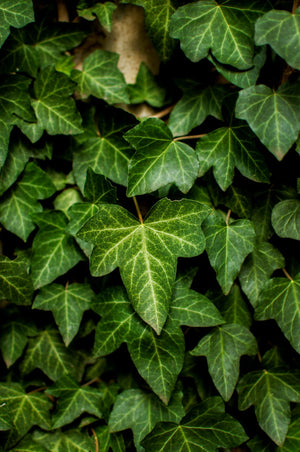
How To Use
Ivy offers versatility and can be utilized in various ways to enhance your indoor and garden spaces. Here are some recommendations based on their characteristics:
- Indoor Decor: Enhance your home with trailing ivy in hanging baskets, shelves, or decorative pots. Their air-purifying qualities make them ideal houseplants.
- Office Plants: Place ivy in bright, indirect light to bring greenery and cleaner air to workspaces.
- Patios and Balconies: Create portable displays with ivy in decorative containers to elevate outdoor aesthetics.
- Ground Cover: Use ivy in shady garden areas where other plants struggle, providing dense coverage to suppress weeds and retain moisture.
- Living Walls: Design vertical gardens with ivy for a lush, textured appearance indoors or outdoors.
- Topiaries: Shape ivy around wire frames for artistic garden displays or unique indoor decor.
- Public Spaces: Incorporate ivy into lobbies, restaurants, and offices for low-maintenance greenery.
Conclusion
Ivy offers timeless beauty and versatility, making it a valuable addition to gardens and indoor spaces. Its lush foliage and climbing or trailing habits enhance visual appeal while contributing to ecological balance. Easy to grow and adaptable, ivy suits a wide range of applications, from elegant indoor displays to sustainable ground covers. By integrating ivy into your space, you’ll enjoy its enduring charm and numerous benefits, including improved air quality, habitat support, and year-round greenery. Explore the possibilities ivy provides and let its natural elegance transform your environment.



